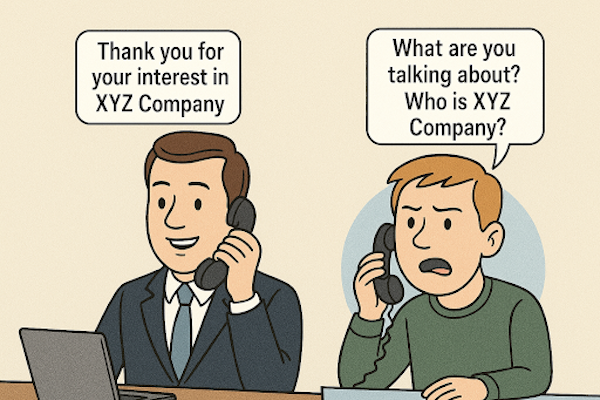Founders Syndrome: The Impact on Growth


Founders Syndrome: The Impact on Growth
Many founders begin with an unwavering passion to build something remarkable. But when zeal morphs into control, where every decision must funnel through the original founder, Founders syndrome emerges, turning a business's greatest asset into its biggest constraint.
The Founders syndrome phenomenon, observed across nonprofits, startups, and early stage businesses, is marked by autocratic decision-making, micromanagement, resistance to change, and a reluctance to delegate. And, it is very common.

The Growth Ceiling
Founder-led businesses often scale quickly in their early stages, powered by a visionary’s drive. She or he has to do what it takes to move sales, operations, and the product forward. However, as organizations evolve, the same traits that once enabled rapid scaling, the single-threaded decision‑making and rigid adherence to the founder’s vision, become growth bottlenecks.
A Widespread Struggle
It’s not just isolated cases—statistics suggest that over 50% of companies lack a clear succession plan, compounding founder-related issues when leadership needs to transition. Meanwhile, patterns of “founderitis” occur. That is where every organizational issue is blamed on founder control and it happens frequently in organizations across the board.
The honest reality is many business owners are unintentionally throttling their own companies.
Turning the Tide with Collaboration & Delegation
What’s the antidote? It starts with cultivating a culture of collaboration and delegation. Founders must intentionally transition from the solo heroic model to a shared leadership framework, empowering others to lead and make decisions.
Board-level strategic planning, clear role definition, and investment in leadership development are key antidotes. This shift improves staff retention and morale and starts to establish a much more scalable infrastructure and growth mindset.
The Role of Fractional Leadership
Enter fractional sales leadership, especially fractional Chief Revenue Officers (CROs) and fractional Heads of Sales. These part‑time, seasoned executives offer high-level strategic guidance at a fraction of the cost of full-time C‑suite hires.. These fractional leaders and others provide:
- Objective, outside-industry thinking, free from founder biases based on proven experiences, past success, and even failures.
- Turnkey frameworks for scalable sales processes and growth.
- Logical decision-making, allowing founders to both step back and gain momentum
A fractional CRO can swiftly map out revenue strategy, rebuild sales infrastructure, and introduce long-term discipline, which is critical for businesses in founder-induced plateaus.
Bringing in Outside Perspective
Often, the missing link is external perspective. Founders deeply embedded in their own product or culture can miss emerging market demands, innovative practices elsewhere, or even some basic decisions that would be greatly beneficial.
Fractional executives bring broader market awareness and cross-industry best practices, challenging outdated assumptions and injecting new ideas. They will observe, make recommendations, and take action in the best interest of the founder or CEO and the business. Examples such as adding fractional sales and operational support, using artificial intelligence (AI) tools, and automating repetitive tasks can give a founder or CEO so much time back that can be spent on strategic growth initiatives. I have seen founders free up over 50% of their time, rekindling their passion which had started to fade, because of their own choices.
Case in Point: Smooth Transitions Drive Growth
Research shows transitions where the founder remains in an advisory role, where she or he is paired with a successor, are more successful than abrupt exits. A staggered transition maintains institutional knowledge and reduces disruption, while allowing room for fresh leadership to chart new growth paths.
Final Takeaways
- Acknowledge Founder Syndrome: Recognize when control is stalling growth.
- Empower Through Delegation: Build capable leadership teams and share decision-making.
- Bring in Fractional Experts: Fractional CROs or Heads of Sales, and other fractional C-Suite leaders offer motivated, cost-effective and fresh leadership and strategic insight.
- Plan Transitions Carefully: Leverage phased roles to maintain continuity.
By combining founder humility, collaboration, and strategic fractional leadership, struggling businesses can break through growth ceilings, turning a once-limiting syndrome into a springboard for lasting, scalable success.
For additional sales tips, sales insights, and revenue growth best practices, visit Justellus’ Sales Growth Blog.




